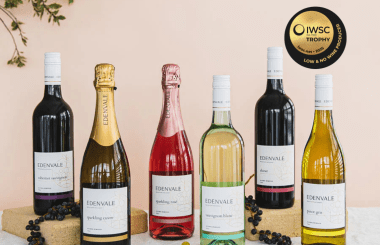IWSC 2024 Wine Judging. Judges’ deliberations on New Zealand and Canadian wines
As we launch into the final days of the IWSC 2024 Wine Judging, our expert judges have been tasting through the many flights of New Zealand and Canadian wines.
New Zealand
Looking firstly at New Zealand wines, it was our Wine Judging Committee member, Alex Hunt MW - Purchasing Director at the UK’s largest family-owned wine importer, Berkmann Wine Cellars - who was at the helm overseeing all panels.
Alex was pleased that there was a strong overall showing from New Zealand this year. A country that can often be considered a one-trick pony, really showed our judges the diversity of winemaking and grape varieties on offer.
The strongest variety this year was Chardonnay, our judges saw a vast improvement in quality with many silver medals awarded. The Chardonnays hailing from Marlborough offered “some reductive styles which were well managed and added great complexity to the wines”. Also offering a strong performance and delivering consistently high scores were the Chardonnays from Hawke’s Bay. The balance of fruit and well-integrated oak delighted our judges.
Sauvignon Blanc is known as the signature wine from New Zealand, and the performance of the zesty styles was consistent across the board, however, it was the oaked Sauvignon Blancs that our judges highlighted as the standouts, one in particular from Waihopai was awarded a gold medal. The wine had a “richness on the palate with great acidity carrying the citrus fruit, engine smoke on the oaky nose with great length”, praised our judges.
Other white varieties that stood out to our judges were intriguing flights of Pinot Gris, presenting a broad range of styles, from the more expressive wines to the fresher, more precise wines. Our judges noted that “the Pinot Gris category showed some shining stars, with the best examples mirroring Alsace”.
For one of our lucky panels, they were treated with an outstanding flight of Albariño, showing just how good this variety from New Zealand can be. A gold medal was awarded to an Albariño that our judges said, “had all the hallmarks of the grape variety, with a lovely influence of salinity”, one judge even went as far as exclaiming the wine was “remarkable”, and our head judge Alex Hunt MW agreed that the wine, “could stand shoulder-to-shoulder with Rías Baixas”.
Moving onto the New Zealand reds that were entered into this year’s judging. Our judges were greatly impressed by the Pinot Noirs from Marlborough. They stated that the flights offered, “plenty of classic examples with obvious varietal expression and a good sense of place. Some of the wines expressed exciting evolution and fine balance, representing the great potential of the region for Pinot.” One standout Pinot Noir was awarded a gold medal by our judges. They praised the wine’s “powerful and structured palate, with wonderfully bright acidity and well-integrated oak supporting the fruit character.”
Another highlight for the reds were the Bordeaux blends. Our judges found that these blends offered “much more pronounced varietal expressions, in particular the Merlot.” A gold medal was awarded to a standout Melot blend, with our judges praising the wine’s “tertiary character, full palate, chalky ripe tannins, balanced fruit and spiced finish that was long and persistent showing great ageing potential. It was easy to enjoy and offers good complexity.”
Canada
It was Canada that really impressed our judges this year, with nearly all of the wines receiving a medal.
Judges commented on the Merlot blends that performed consistently well, with the most successful wines demonstrating well-judged oak use, that didn’t overwhelm the fruit characteristics and showed pleasant tannins. Syrah wines also saw a number of silver medals awarded, with our judges noting that the older vintages performed the best, suggesting that “Canadian Syrah benefits from ageing”. The wines had judiciously used oak, it wasn’t overt, but supported the fruit in a very sophisticated way.
Cabernet Franc was one of the grape varieties that really surprised our judges. It is a variety that can be divisive, but this year the winemaking was outstanding, with many ripe Cabernet Francs presented to our judges, with no overt herbaceousness.
Canadian whites also pleased our judges this year. The flights of Chardonnay showed some really well-made wines. Those that performed the best had “a good balance of fruit, acidity and alcohol, with judicious use of oak”. The Viogniers from Canada also stood out to our judges, showing good quality and consistency overall, with our judges commenting that the wines had “well managed acidity and ripeness of fruit. The oaked examples with some integrated reductive smoke showed good appeal and could be a style worth pursuing when done well.”
As with previous years, the showstoppers were the sweet wines from Canada. A number of gold medals were awards to standout wines that showed real class and elegance. Our judges praised the wines that “had complex aromas and flavours, with beautiful structure and vibrant acidity.” This year our judges were impressed by the stylistic diversity amongst the Canadian sweet wines.
The ice wines from Canada scooped up an impressive 3 gold medals, with our judges praising the wines' bright acidity that balanced the sweetness, maintaining striking fruit characteristics from “stewed apples” to “orange blossom” and “roasted pineapple”, all accentuated by the impressive long finishes.
Stay tuned for further judges’ deliberations and the results announcement on 20 May.



